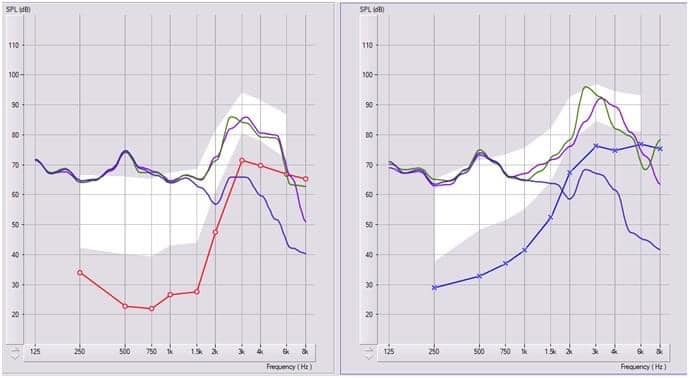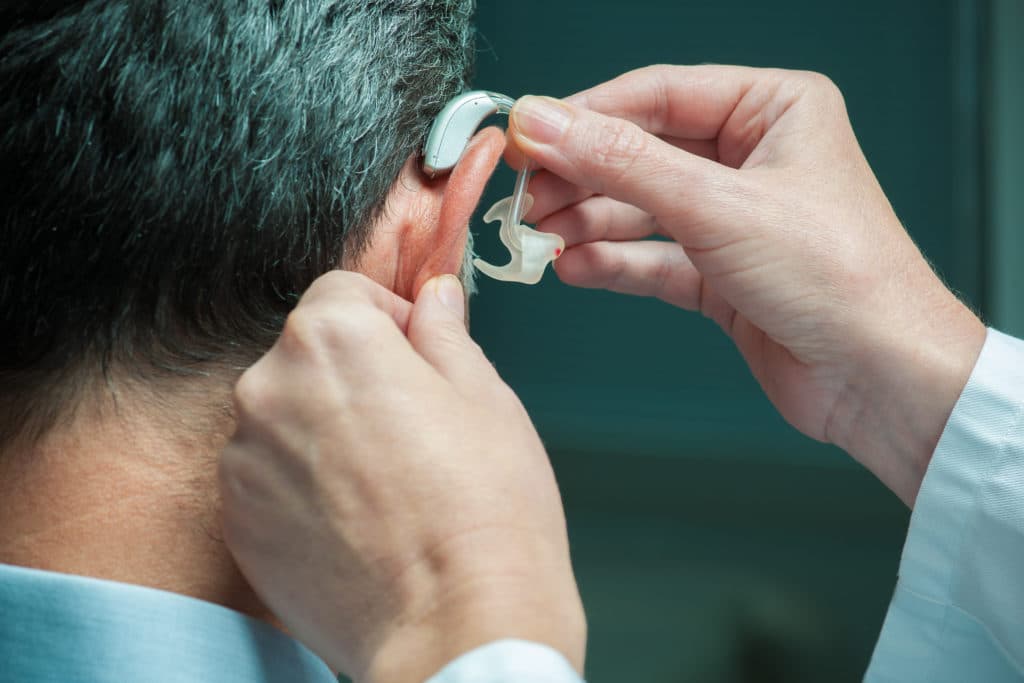Real-Ear Measurements in Salem, OR
Eliminate The Guess Work From The Fitting Process

Real-Ear Measurements
Less than 30% of hearing care providers use Real-Ear Measures (R.E.M.). However, at Salem Audiology, we use it 100% of the time. Why? R.E.M. allows the audiologist to verify that hearing aids are amplifying sound correctly for a specific patient’s hearing loss. It takes the “guesswork” out of the prescription process. When using R.E.M, the results are superior.
Why use Real-Ear Measurements?
If you needed glasses, you wouldn’t grab a pair off the rack until you found something that made your eyesight less blurry. You would most likely schedule an appointment with an optometrist who would then have you take an eye exam so they can match your glasses to your eyesight.
A prescription is the amount of amplification a person with hearing loss would require at an individual frequency to make sure sounds are comfortable and audible for them. Perscriptions take into account a variety of information such as:
- Age
- Gender
- How long they have been wearing hearing aids
- Hearing loss severity
The same is correct for hearing aids; many manufacturers have preset ranges that will cover most of the hearing thresholds. The issue with this is that each manufacturer uses a different algorithm to adjust the amount of amplification. However, using R.E.M. Audiology allows the audiologist to fine-tune your hearing aid to your specific hearing loss. Often, properly fitting a hearing aid is better than having the highest level of technology.

What is Live Speech Mapping?
Live speech mapping is a verification method used during R.E.M. to ensure your hearing aids are programmed to provide optimized speech clarity for your individual hearing loss. Your audiologist has equipment that allows them to “see” what you hear through your hearing aids on a screen in real-time. This helps you to visually understand the differences that hearing aids can make in your hearing.
How do Real-Ear Measurements Work?
A small microphone called a “probe tube” is inserted into your ear. In front of you is a speaker that generates a known calibrated signal. The probe tube will pick up the sound amplified inside your ear. It then sends that information to the hearing aid software. Next, the audiologist can determine how well the amplification is meeting your prescription.
The audiologist will make the necessary adjustments and then repeat the sound and amplification process to measure it again until the results are optimal for maximum speech intelligibility.
While REMs help to take the guesswork out of the hearing aid fitting process, the results aren’t always perfect, since everyone’s perception of sound is different. REMs are a measurement of how much sound is occurring in your ear canal, not your perception of what it sounds like. The latter can be influenced by life experiences, previous hearing aid use, and how long the person has had an untreated hearing loss. Individual perception of matching the volume to the “optimized” target will be different for someone who is new to hearing aids as compared to someone who is a long-time hearing aid user. It’s often the case for new users to not want the volume at 100% of the target volume since they need time to get used to hearing better, whereas a long-term user is already used to it. Getting used to hearing aids as a new user is akin to rehabilitating an injury through physical therapy, where we start with an amount of sound the person can tolerate, usually 70-90% of the target volume, and gradually increase it over time when they are ready for more amplification.
BENEFITS OF REAL-EAR MEASUREMENTS:
- It provides precise and substantive confirmation, ensuring proper amounts of amplification are prescribed for your distinct hearing loss. Without R.E.M., successful results cannot be assured and pose a risk of over/under amplifying sounds.
- Focuses on the essential function of being able to hear human speech efficiently.
- Engages both you and your family in the hearing aid fitting process.
- Produces instant and tangible results.
- Shown to improve successful results of fittings.
- Improves your confidence and comfort in using your new hearing aids.
- Produces more specific programming of hearing aids.
- Reduces return visits.
Real-Ear Measurements in Salem, OR
Salem Audiology Clinic uses Real-Ear Measurements when programming hearing aids to take the “guesswork” out of the process. Although 100% improvement for hearing loss is not always possible, our goal is to get as close to 100% as we can. If you would like to find out how much more you can gain from R.E.M., please reach out and schedule a consultation with one of our highly trained audiologists today.
For additional information on Real-Ear Measurements please see the video from Dr. Cliff Olson.
